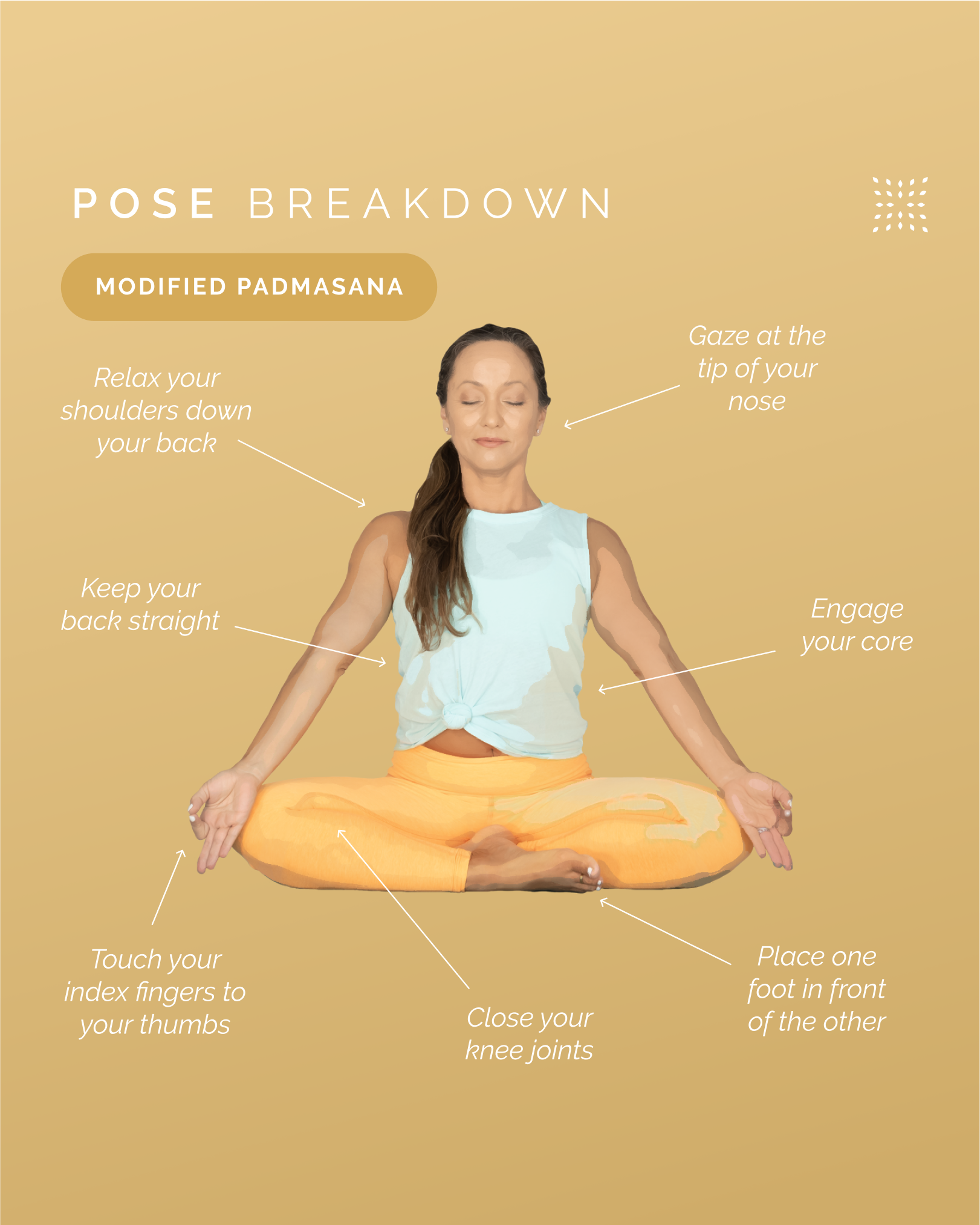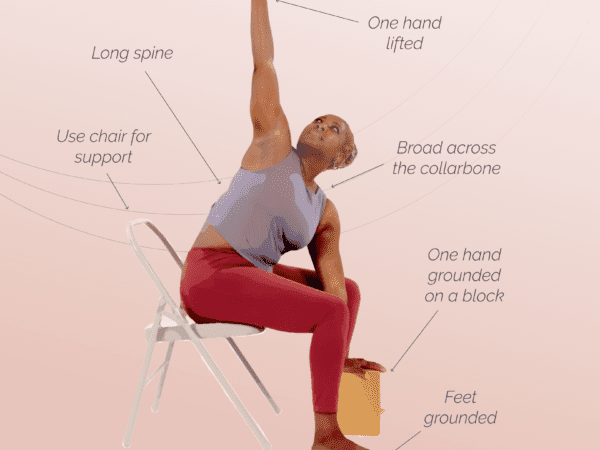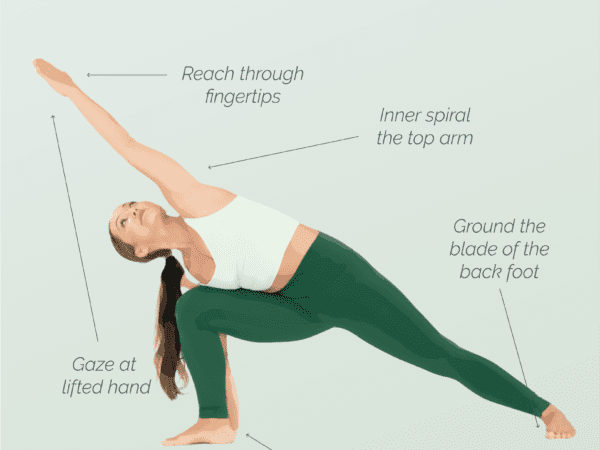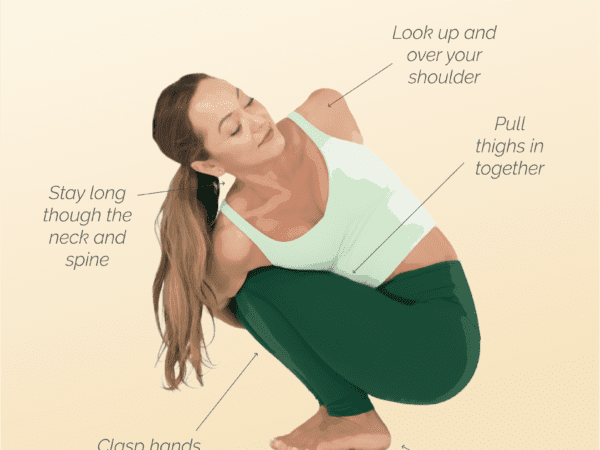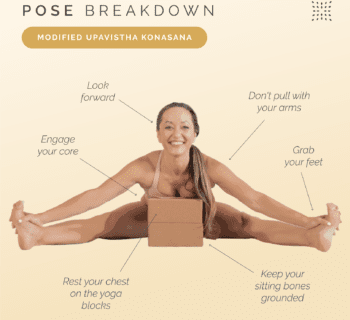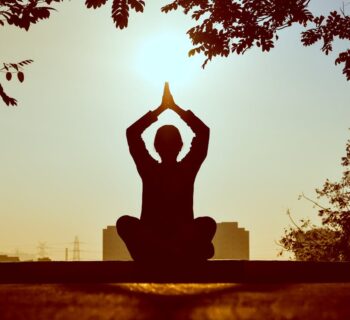In the realm of yoga, modified lotus pose, or padmasana, stands as a beacon of tranquility and flexibility. This revered posture, a variation of the traditional Lotus Pose, offers a harmonious blend of physical and mental benefits, making it accessible to practitioners of all levels. By embracing modified lotus pose, individuals can unlock a deeper connection to their inner selves, fostering a sense of peace and balance. Whether one is a seasoned yogi or a curious beginner, this pose provides a gateway to enhanced mindfulness and well-being.
Benefits of Modified Lotus Pose
Modified lotus pose offers a multitude of benefits that extend beyond the physical realm, touching upon mental and emotional well-being. Here are some of the key advantages:
Enhanced Flexibility: This pose gently stretches the hips, knees, and ankles, promoting greater flexibility in the lower body.
Improved Circulation: By sitting in this posture, blood flow to the pelvic region is increased, aiding in the nourishment of the reproductive and digestive organs.
Stress Relief: Modified lotus pose encourages deep, mindful breathing, which helps reduce stress and anxiety levels, fostering a sense of calm and relaxation.
Better Posture: Practicing this pose regularly can improve spinal alignment and posture, reducing the risk of back pain and other related issues.
Mental Clarity: The meditative aspect of the pose enhances concentration and mental clarity, making it an excellent practice for those seeking to improve focus and cognitive function.
Emotional Balance: By promoting a state of inner peace, this pose helps balance emotions, making it easier to navigate the ups and downs of daily life.
Strengthened Joints: The gentle pressure applied to the knees and ankles can help strengthen these joints, improving overall joint health and mobility.
Incorporating modified lotus pose into a regular yoga practice can lead to profound improvements in both physical health and mental well-being, making it a valuable addition to any wellness routine.
Contraindications of Modified Lotus Pose
While modified lotus pose offers numerous benefits, it is important to be aware of certain contraindications to ensure safe practice. Here are some conditions and situations where caution is advised:
Knee Injuries: Individuals with existing knee injuries or conditions such as torn ligaments or meniscus issues should avoid this pose, as it places significant pressure on the knees.
Hip Problems: Those with hip injuries or severe hip tightness may find this pose challenging and potentially harmful. It is advisable to consult a healthcare professional before attempting it.
Ankle Issues: People with ankle sprains, fractures, or chronic ankle instability should refrain from practicing this pose to prevent further injury.
Lower Back Pain: If there is a history of lower back pain or disc issues, this pose might exacerbate the condition. Modifications or alternative poses should be considered.
Pregnancy: Pregnant individuals should approach this pose with caution, especially in the later stages of pregnancy, and seek guidance from a qualified yoga instructor.
Circulatory Problems: Those with circulatory issues, such as varicose veins or deep vein thrombosis, should avoid this pose as it may impede blood flow.
Recent Surgery: Anyone who has recently undergone surgery, particularly in the lower body, should avoid this pose until fully healed and cleared by a medical professional.
Practitioners should always listen to their bodies and avoid pushing beyond their limits. Consulting with a healthcare provider or a certified yoga instructor can help ensure that the Modified Lotus Pose is practiced safely and effectively.
How to do Modified Lotus Pose Step-by-Step
For those who find the full lotus pose challenging, sitting in easy seat (sukhasana) offers a comfortable and accessible alternative. If sitting on the floor is too difficult for you, you can also do this pose in a chair.
Begin Seated: Start by sitting on the floor with your legs extended straight in front of you. Use a yoga mat or a folded blanket for added comfort and support.
Cross the Legs: Gently bend your knees, closing your knee joints completely and allowing them to fall outward. Allow the sole of one foot to rest again the inner thigh of the opposite leg and the sole of the other foot to rest again the shin of the opposite leg.
Align the Spine: Sit up tall, lengthening your spine. Ensure that your shoulders are relaxed and your chest is open. Engage your core muscles to support your posture.
Position the Hands: Place your hands on your knees or thighs, palms facing up or down, depending on your preference. You can also bring your hands into a mudra, such as Gyan Mudra, by touching the tips of your index fingers to your thumbs.
Relax the Hips: Allow your hips to relax and release any tension. If your knees are elevated and uncomfortable, you can place a folded blanket or cushion under each knee for additional support.
Focus on Breath: Close your eyes and take several deep, mindful breaths. Focus on the inhalation and exhalation, allowing your breath to guide you into a state of relaxation and mindfulness.
Maintain the Pose: Stay in easy seat for as long as it feels comfortable, maintaining a steady and relaxed breath. This modified version of lotus pose provides a stable and serene foundation for meditation and mindfulness practices.
By practicing easy seat, individuals can enjoy many of the benefits of the traditional lotus pose without straining their knees, hips, or ankles. This modification makes the pose accessible to a wider range of practitioners, promoting comfort and ease in their yoga practice.
Are you looking for more guidance on your yoga journey? Sign up for Omstars to get access to thousands of yoga classes in the comfort of your own home. Click here to start your subscription.


